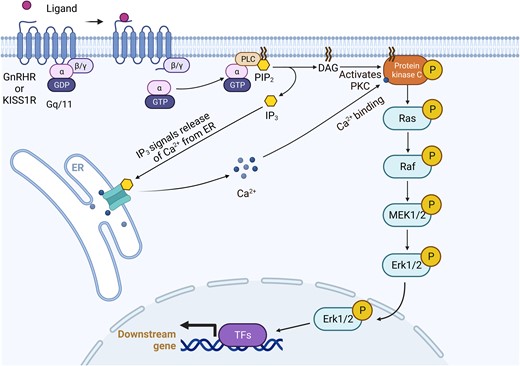Identification of Environmental Compounds That May Trigger Early Female Puberty by Activating Human GnRHR and KISS1R
 academic.oup.com
academic.oup.com
Abstract
There has been an alarming trend toward earlier puberty in girls, suggesting the influence of an environmental factor(s). As the reactivation of the reproductive axis during puberty is thought to be mediated by the hypothalamic neuropeptides kisspeptin and gonadotropin-releasing hormone (GnRH), we asked whether an environmental compound might activate the kisspeptin (KISS1R) or GnRH receptor (GnRHR). We used GnRHR or KISS1R-expressing HEK293 cells to screen the Tox21 10K compound library, a compendium of pharmaceuticals and environmental compounds, for GnRHR and KISS1R activation. Agonists were identified using Ca2+ flux and phosphorylated extracellularly regulated kinase (p-ERK) detection assays. Follow-up studies included measurement of genes known to be upregulated upon receptor activation using relevant murine or human cell lines and molecular docking simulation. Musk ambrette was identified as a KISS1R agonist, and treatment with musk ambrette led to increased expression of Gnrh1 in murine and human hypothalamic cells and expansion of GnRH neuronal area in developing zebrafish larvae. Molecular docking demonstrated that musk ambrette interacts with the His309, Gln122, and Gln123 residues of the KISS1R. A group of cholinergic agonists with structures similar to methacholine was identified as GnRHR agonists. When applied to murine gonadotrope cells, these agonists upregulated Fos, Jun, and/or Egr1. Molecular docking revealed a potential interaction between GnRHR and 5 agonists, with Asn305 constituting the most conservative GnRHR binding site. In summary, using a Tox21 10K compound library screen combined with cellular, molecular, and structural biology techniques, we have identified novel environmental agents that may activate the human KISS1R or GnRHR.